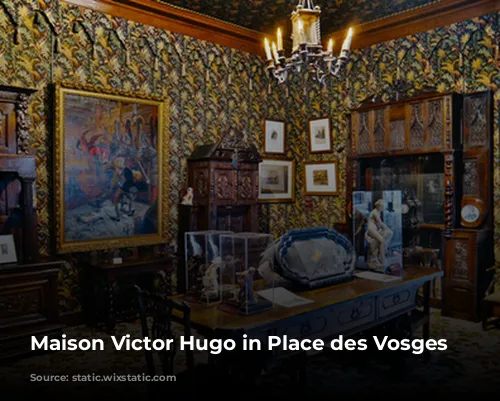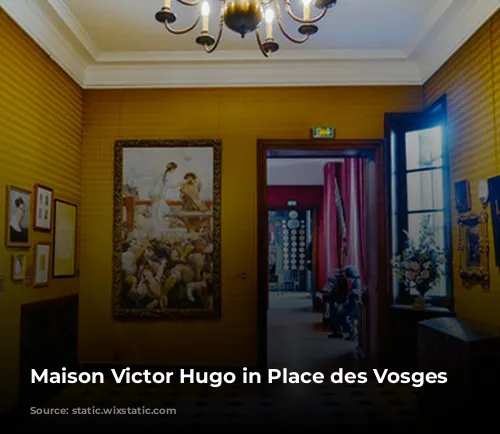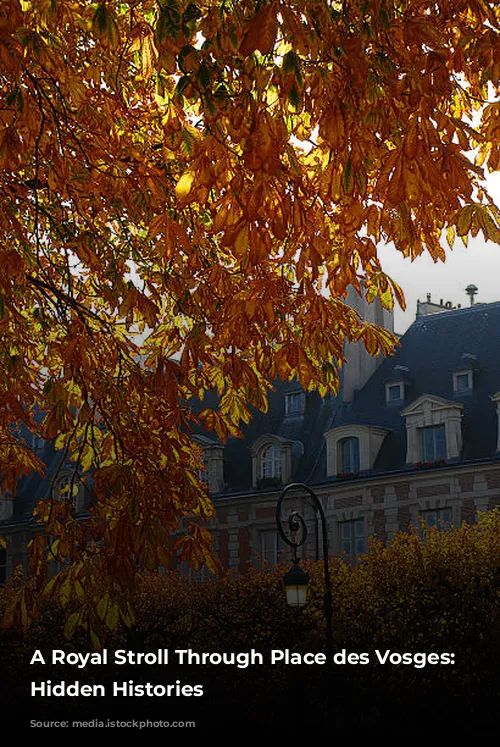Step back in time and wander through the Place des Vosges, Paris’ oldest planned square and a true gem of French history. This enchanting space, originally called the Place Royale, whispers tales of royalty, artistic brilliance, and enduring architecture.
Every corner of the square holds a story, and each of its surrounding buildings harbors a unique legacy. Let’s embark on a journey to discover the secrets hidden within these elegant facades.
The King’s Pavilion: A Symbol of Power
Imagine strolling through the heart of Place des Vosges and gazing upon the majestic Pavillon du Roi (King’s Pavilion), the grandest of all the buildings. It stands proudly, facing the square’s central equestrian statue, a testament to the power and grandeur of the French monarchy.
This regal pavilion, erected between 1605 and 1608, served as a beacon of the king’s authority, even though no monarch ever resided within its walls. Its towering height, exceeding that of its neighboring pavilions, symbolized the supremacy of the sovereign.
A Stroll Through Time: Unveiling the Stories of Place des Vosges
Beyond the King’s Pavilion, each building holds a treasure trove of historical and artistic significance. The Hôtel Coulanges, nestled beside the King’s Pavilion, has witnessed a colorful past. It once housed nobles close to the monarchy and later hosted renowned figures like the painter Georges Dufrénoy and the legendary dancer Isadora Duncan.
The Hôtel de Sully, constructed between 1624 and 1630, stands as a beacon of architectural elegance and historical importance. Today, it serves as the headquarters of the Centre des Monuments Nationaux, an organization safeguarding France’s national heritage sites. Its exquisite courtyard and facade draw visitors from far and wide.
The Hôtel de Chaulnes, once home to the king’s advisor, holds the distinction of hosting King Louis XIII during the square’s official inauguration in 1612. Today, the French Academy of Architecture makes its home on its first floor, a fitting tribute to the building’s rich architectural heritage.
More Than Just Facades: Secrets Revealed
The Hôtel Pierrard, with its ancient graffiti, whispers tales of bygone days. The inscription “NICOLAS 1764” etched upon its facade transports us back centuries, offering a glimpse into the lives of those who once walked these streets.
The Hôtel de Montbrun, now a hotel, previously served as a healthcare center, a fact preserved by a plaque adorning its walls. The Hôtel du Cardinal de Richelieu, a building shrouded in intrigue, is said to have been the cardinal’s residence, although evidence points to his family’s occupancy rather than his own.
A Legacy of Literature and History: The Hôtel de Rohan-Guémené
One of the most remarkable buildings in Place des Vosges, the Hôtel de Rohan-Guémené, once belonged to one of France’s most influential families, the Rohans. For a century, they held sway over the mansion, but financial woes forced them to sell it in 1782.
This grand edifice, one of the best-preserved in Place des Vosges, boasts an illustrious past. Its second floor served as the residence of the renowned writer Victor Hugo from 1832 to 1848. Today, the Maison Victor Hugo, a museum dedicated to his life and work, breathes life into this historical treasure. The Lycée Professionnel Théophile Gautier, a vocational high school, shares the space at number 6bis.
A Place of Worship and Transformation: The Hôtel de Ribault
The Hôtel de Ribault, once seized during the French Revolution, underwent a transformation, becoming the town hall for the ancient 8th arrondissement. It underwent extensive renovations to fulfill its new purpose.
In 1963, the building found its current calling as the home of a synagogue founded by Charles Liché. Its presence has fostered a vibrant Jewish community in the area.

The Queen’s Pavilion: A Royal Legacy
Facing the King’s Pavilion across the square stands the Pavillon de la Reine (Queen’s Pavilion), a five-star luxury hotel today. The Queen’s Pavilion, built in 1605-1608, is the second tallest mansion in Place des Vosges, gracefully connecting the square to the Rue de Béarn.
The pavilion bears a symbol of the Medici family, to which Marie de Medici, the second wife of King Henry IV, belonged. The sun inscribed in a medallion atop the central arcade serves as a reminder of her legacy. While Queen Marie never resided in the pavilion, Anne of Austria, wife of King Louis XIII, briefly called it home. The Hôtel d’Espinoy also shares this historic address.
Exploring the Heart of Paris: A Journey Through Time
As you stroll through Place des Vosges, take your time to soak in the atmosphere, to linger in the shadows of the towering pavilions, and to imagine the countless stories that have unfolded within its walls.
This captivating square, a tapestry woven with threads of history, architecture, and art, invites you to explore its captivating past and to experience the timeless beauty of Paris.


